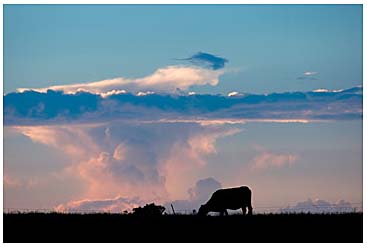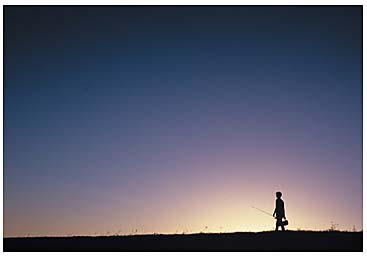- The Camera Is Our Sounding Board
- We're Not the Only Ones Involved
- Story Caregivers
- The Intentional Fallacy: Friend or Foe?
- Visual Themes
- Are You Telling a Story? Check Again
- A Few Basic Questions
The Intentional Fallacy: Friend or Foe?
Have you ever heard the statement “It’s all just so subjective?” Of course you have! We’ve all heard it and said it dozens of times before becoming photographers, and twice that much since. It’s no secret anymore that most things produced through the creative process involve a variety of factors, such as inspiration, influence, personal experience and history, technique, gadgets, and good ol’ know-how. You can thank postmodernism for that.
Personally, I can certainly appreciate and respect the subjectivity we consider as part of being creative. However, at times this statement can really get under your skin, especially when it is made in reference to your own work. I know, I know, it shouldn’t really bother me (or us), but it does. It’s at these times you get a bit defensive about your images and about the circumstances that brought you to trip the shutter at that particular time. You feel as if you have to explain what you ate for breakfast the morning you made the photograph, the tire you had to change as you were on your way to the shoot, as well as the puppy you lost when you were seven years old that inspired the emotion you were trying to emphasize, in order for the viewer to fully understand and finally “get” your work. And you thought you were just creating a colorful, well-composed image.
So, why does this comment, or situations where people are drawing different conclusions from our work than we are, get on our nerves? It has something to do with what folks much smarter than me call the intentional fallacy.
More of a literary term than anything, the intentional fallacy essentially refers to the difference between the creator’s intended meaning in a piece of work and the meaning derived from the work by those who consume it. The fallacy, or mistaken idea, occurs when authors believe that their intended meaning is the only true meaning. I don’t see why it can’t apply to photography. I’m not sure what the literary critics would say, but I’m willing to bet many would side with me on this.
When you make an image (or a series of images) and then release it to the world via a physical or online medium, you are letting it trot away into the wild. The wild is where people who did not create the image exist, where interpretation of and connection to the image are arbitrary at best sometimes. You might be able to explain your image to a small group in that wilderness, but for the most part, your image has to do the talking.
On top of that, it will speak differently to different people. The message an image sends to viewers is interpreted not only with the photographer’s intention, but also with the viewer’s history and place in the wilderness, as well as the contextual matter surrounding the work, such as text, other art, and maybe even the inappropriately placed advertisement on a social media Web site. All of these things, plus many more, come to play a role in how an image, your image, is viewed, consumed, and experienced by any number of people.
The wilderness that is the audience is vast, but it is not an unfortunate place for our work as photographers to reside. Remember my story about Jeff Haley’s portrait? I had a completely different perception of my own photograph than did some other photographers and visual communicators. A little constructive criticism doesn’t hurt now and then—in that case it ended up being helpful. It also helped me understand why the magazine picked a different shot to feature. You don’t always have the chance to receive feedback on your images before they’re officially “out there,” but it can be valuable when you do.
So, if the intentional fallacy is an issue we confront continuously, and it doesn’t seem like we can do anything about it, why even bring it up in regard to storytelling? Well, why not? Part of creating story is being able to effectively communicate a message. Stories are told to other people, and there’s no way around that important part of the process. If you, the creator, the author, the photographer, want to tell stories, it’s worth considering that there will always be different ways of seeing and consuming the same story that you produce.
I don’t believe the intentional fallacy should drive you to change your visual style should it prove successful for you, but keeping the audience’s interpretation in mind might just help you seek out those images that really do tell the story you want out there—you know, in the wilderness.
Another answer would be to use the intentional fallacy while in the field as a way to see the images you create. Photographers and other artists alike have stared this issue in the face for eons, and the more we come to recognize our work as being prone to different interpretations, the more we’re able to use that knowledge in how we compose, what we emphasize in our images, where our focus is placed, and even the color temperature we use on certain shoots.
Intentionally giving viewers the ability to interpret beyond the overt story in your images might just provide you with the depth of storytelling you and your images need. Instead of just photographing a waterfall as you’ve seen it before, or under environmental and technical conditions you are likely to shoot others under, approach it from an angle that perhaps emphasizes the fragility of the environment around it and underexpose the scene by two-thirds of a stop to subtly help the viewer interpret the image on a different emotional plane.

A gloomy Gorman Falls, Bend, Texas.
Canon 5D Mk II, 35mm, 0.5 sec, f/22, ISO 50
This sounds a bit like directing your viewer in experiencing the image, and it is. You are the creator, and although the intentional fallacy is not going away no matter what you do, you can use that knowledge as a tool in your belt that helps you find and breathe more life into images below the surface of the story you primarily want to exhibit to an audience.





